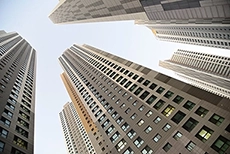Section 179D Tax Deductions


179D Tax Deductions Improve Investments
Claim Up To $5.65/ft2 Tax Deduction
Section 1790D Tax Deductions imprfove applies to a commercial and multifamily high-rise buildings. It is possible to profit off the deductions you'll get after doing energy efficiency upgrades without double-dipping on the incentives.
I know of no investment that provides a 100% ROI in less than 12 months other than energy efficiency upgrades. The oil and gas industryhas been using tax incentivesfor decades, and their making record profits.
Strategic Investments, Not Capital Expenses
Because energy audits can vary in size and scope, costs will also vary. Ask us about our Audit Terms. We are more than happy to work with you on payment. Our clients find financing the upgrades more economical than paying all at once.
Earn Substantial Savings
The 179D tax deduction provides significant benefits for energy-efficient commercial buildings. Understanding the implications of prevailing wage is essential for compliance and maximizing benefits.
When making improvements to your property, whether you own or lease, you can qualify for $2.50/ft2 by with only 25% improvements. This amount increases by $0.10/ft2 for each 1% you get in energy savings up to $5/ft2.
If you're not improving the efficiency of your building you're needlessly wasting money on energy bills that could be better spent.
When the energy and power costs of a new or retrofitted building are reduced by 35%, 10% more than the required 25%, while meeting prevailing wage and apprenticeship requirements, the 179D Deduction would be $3.50 per square foot.
Meeting the Prevailing Wage
Property owners are responsible for making sure the prevailing wage is paid. At first blush, you're probably thinking union wages and that's too much or you didn't request prevailing wage in your request for proposals, and are thinking of giving up or know people who have.
Well, you might have actually paid the prevailing wage based on the wages you actually paid.
Think of the prevailing wage as a task based wage, and not an employee wage. If you pay your electricians $45/hr, and your laborers $22/hr, and the prevailing wage for electricians is $50/hr, and laborers is $25/hr, this appears you have an underpayment of the prevailing wage.
But maybe not. If your electrician performed any tasks that a laborer would do, then you overpaid the prevailing wage for the electrician at $45/hr for that task.
Let's Look at an Example
Assume your electrician spent two hours on the site's switchgear, and two hours installing ceiling fans. You paid your electrician $180 (4 hours at $45/hr). But two hours was spent installing ceiling fans, which is a laborer's task. From a prevailing wage perspective, you overpaid the prevailing wage by $23 ($45/hr actual paid - $22 prevailing wage).
Special Rule for “Designers”
Previously, only public agencies were allowed to allocate the 179D Deduction. Now all tax-exempt entities can, including charitable organizations, religious institutions, private schools or colleges, private hospitals, museums, tribal governments, and any other organization falling under IRC 501(c).
Return On Investment
There are other deductions that go along with the 179D Tax Deductions that oftentimes get overlooked. Don't leave these deductions on the table. They can add up to more than you spent.
Contact us today and find out if you qualify for the 179D Tax Deductions, and other deductions.